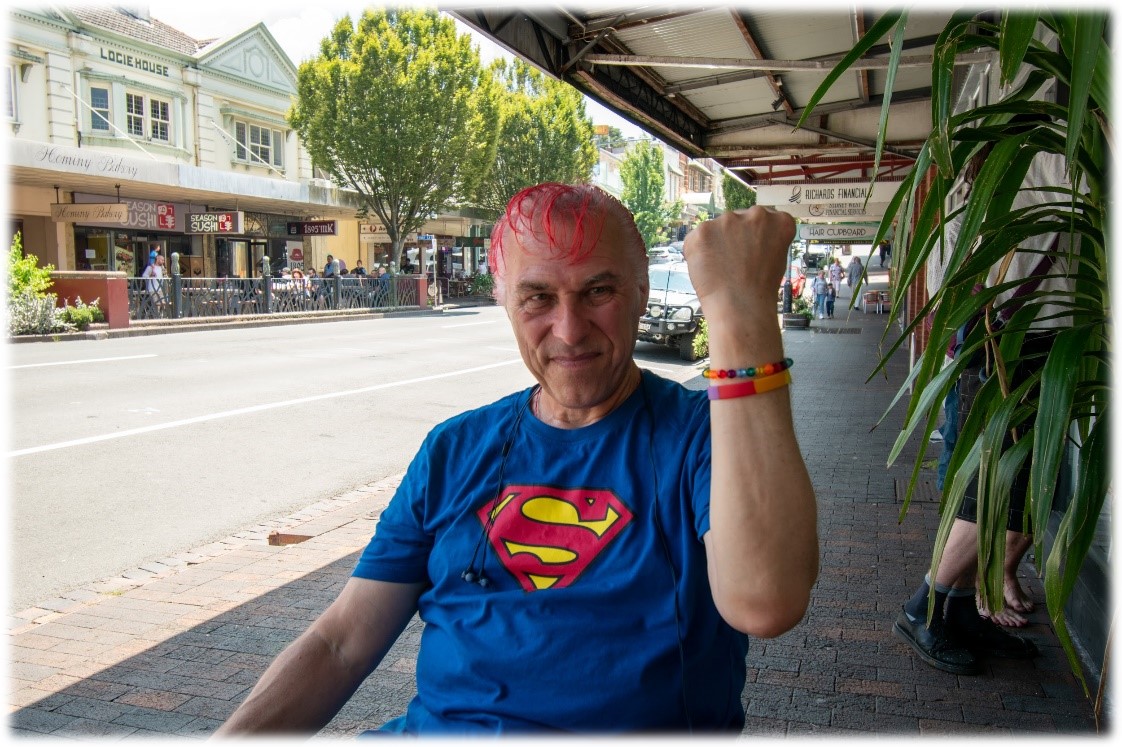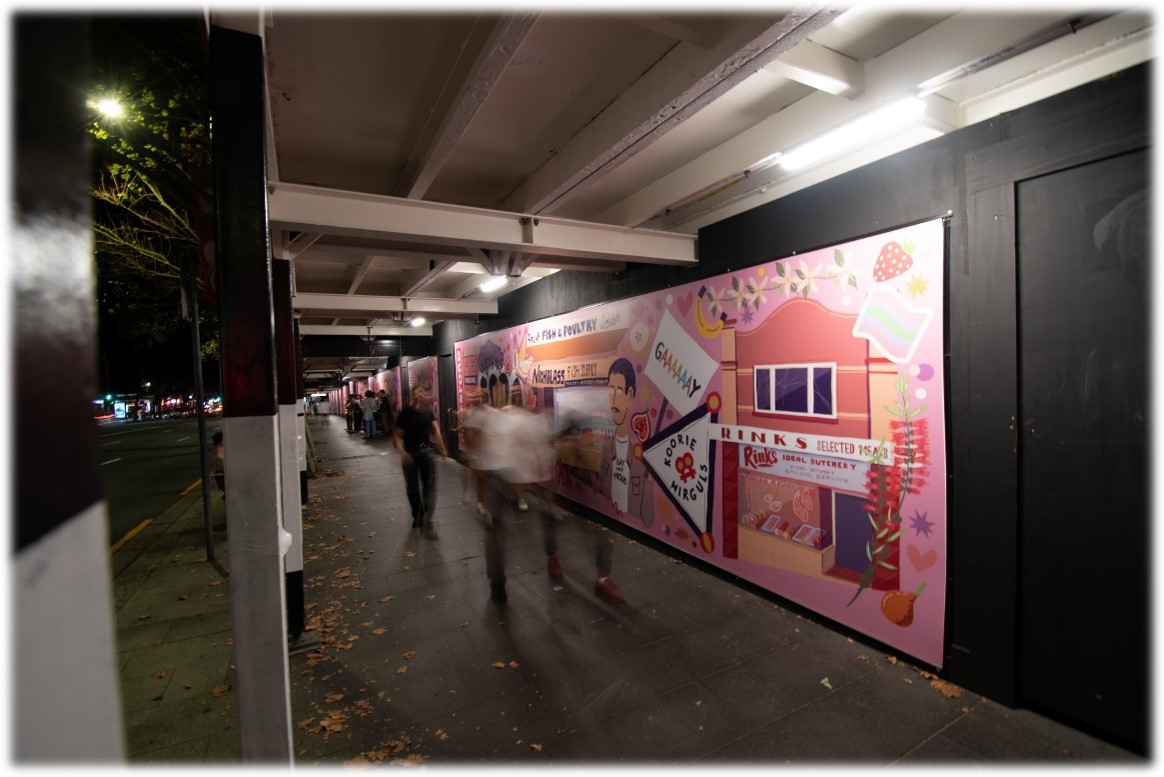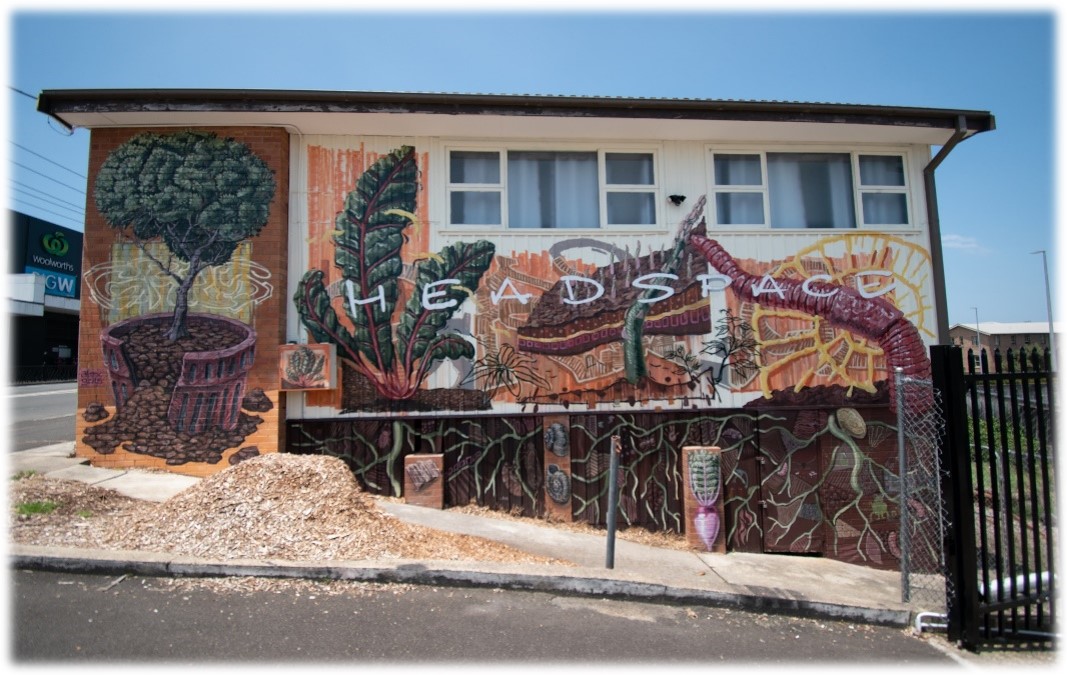by Sagan Smith
I met Robin in the Blue Mountains of Southwest Australia. We had just left a cafe, where we stumbled upon each other with no prior point of contact. He told me his name and his story, and our time was nearly halfway over before he remembered to ask me for my own name. Thinking back at this gay man who had grown up through the 1970s and 80s, I can’t help but wonder if this unintentional discretion—this implicit respect for anonymity—was a vestige of an old survival tactic.
We walked down the sidewalk as he told me, in no uncertain terms, that this was the best Australia had to offer for queer individuals like ourselves. I suppose that is to say that a lot of Australia is fairly quiet. People rather keep to themselves than show open support (or opposition) of queer folks. The Blue Mountains were obviously an area that was more supportive. Robert made this clear by taking us to the area’s various queer and youth support centers. It was certainly an area that was starting to develop a queer culture of its own. However, if I was to see the best queer space Australia had to offer, he recommended I visit Oxford Street in Sydney.

As a popular area within Sydney’s central business district, Oxford Street was already busy when I visited. But as I write this, halfway across the globe on the night of February 24th, Oxford is joyously celebrating the first hours of Sydney’s 45th annual Mardi Gras parade, the largest LGBTQIA+ event on the continent. Such a dense event, I hear, that cameras are used to identify the most populated areas, such that celebrators can be led elsewhere. This year, a fifteen-year-old drag queen (one of the world’s youngest) named Candy Featherbottom, will be performing, among many others, in an event expected to include over 12,000 participants.
A few decades ago, Robin tells me, gay people like himself did not dare to come out even to their closest friends. The HIV/AIDS crisis was a worldwide phenomenon, and the virus affected even those who did not contract the disease. Queer people were being murdered, and the police would write these incidents off as “suicides.” In some cases, police officers themselves, usually plain-clothed, would participate in such homicides. At this point, the World Health Organization (WHO) still classified homosexuality as a mental illness.
Today, homosexuality’s status as a mental illness has long been written off as archaic. Justice John Sacker of the Supreme Court of New South Wales is heading a judicial inquiry into unsolved hate crime deaths committed since the 1970s, including the systematic review of all cases concluded as supposed suicides. Many police departments have a dedicated GLLO—a gay and lesbian liaison officer, many of whom are great allies to the community.

Sydney, and Australia in general, has come a long way since the 1970s. Robin tells me of multiple organizations, networks, and resources for the various queer communities in and around Sydney, both broad and niche. PinkMountains is an online information guide and directory for queer-friendly businesses and resources in the Blue Mountains region. Also based in the Blue Mountains, I was particularly interested in the Bush Lemons, a bushwalking and outdoors group for lesbians. I am similarly interested in starting a queer-focused wilderness and outdoor activity organization here at the University of Nebraska-Lincoln. One of the most niche is Cosplays Out of the Closet, a Sydney-based queer cosplaying group. In just a few decades, queer people in Sydney have not only found methods of surviving, but thriving.
As queerness becomes more and more accepted, it is unclear if the boundary between LGBTQIA+ communities and the larger heteronormative sphere will ever be fully erased. On one hand, Robin mentioned that queer people are now able to move even to small-town Australia, buy property, renovate, and sell for a profit—a practice historically exclusive to the wealthiest and most privileged of people. On the other hand, with the greater prevalence of queer celebrations at events such as the Mardi Gras parade, queer people are still being labeled as deviants, equated to sex offenders and pedophiles.
Overall, however, it is exciting to see progress move in a generally positive direction, and there is still much cause for celebration. While the WorldPride—the largest pride event in the world in any given year—has historically been hosted in the northern hemisphere, this year’s WorldPride event will be hosted at none other than Sydney’s Mardi Gras Parade, the first time it has even been held in the southern hemisphere.

After saying goodbye to Robin, I returned later that night to walk through Oxford Street, looking at the crowds of people gathered near clubs, bookstores, youth centers, and more. I saw many people around my age, mid- to late-20s or so. And yet, throughout the entire day, Robin remained the only older queer I had seen. I can’t help but feel both immense pride when thinking about the future, and deep sorrow when remembering the not-too-distant past. It’s obvious that this sheer number of queer people have always existed. So: Where have we all been hiding? How many have we lost along the way?
Key Takeaways
- Queer people in Australia, much like the rest of the world, suffered from death and discrimination during the HIV/AIDS crisis of the 1980s.
- Justice is now being sought for queer victims of hate crimes, especially those who were wrongly accused of having committed suicide.
- Queer groups and resources are now widely available in the Sydney area, including for niche interests.
- Queer people are comfortable even in small-town Australia, where they have taken on real estate investment.
- Australia has only been recently recognized as a major location for queer culture amongst a global network of pride events.